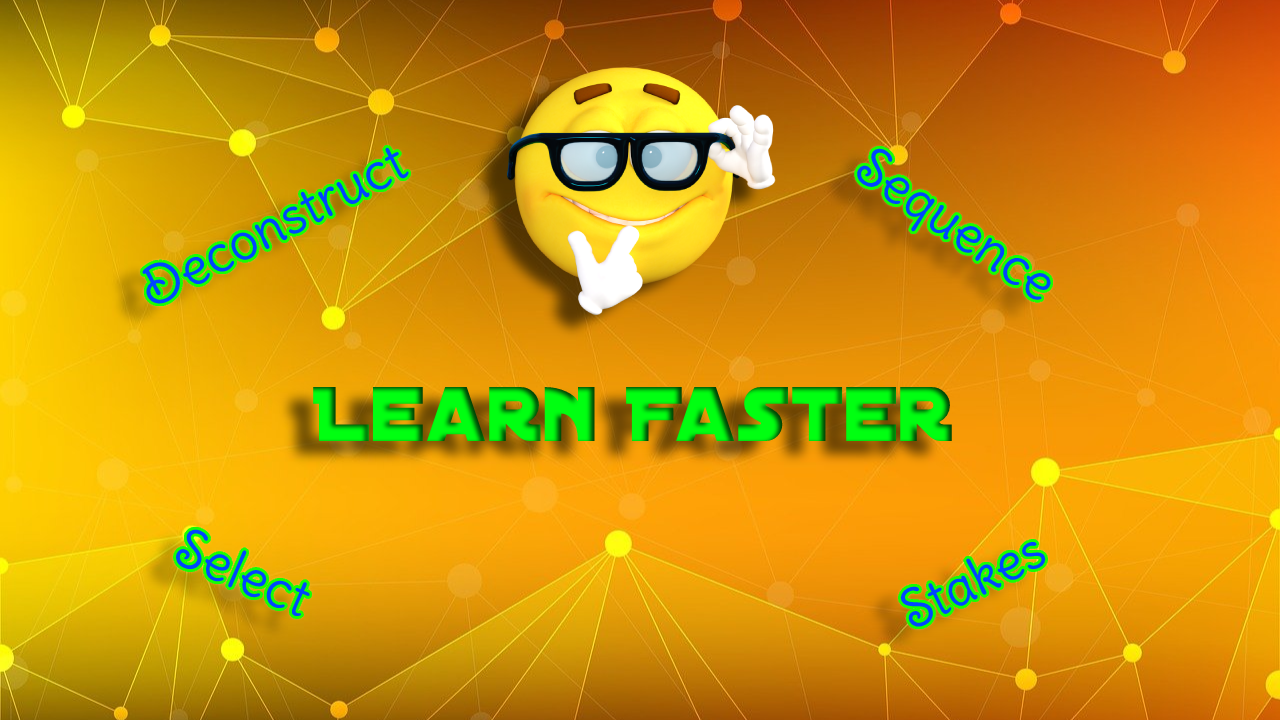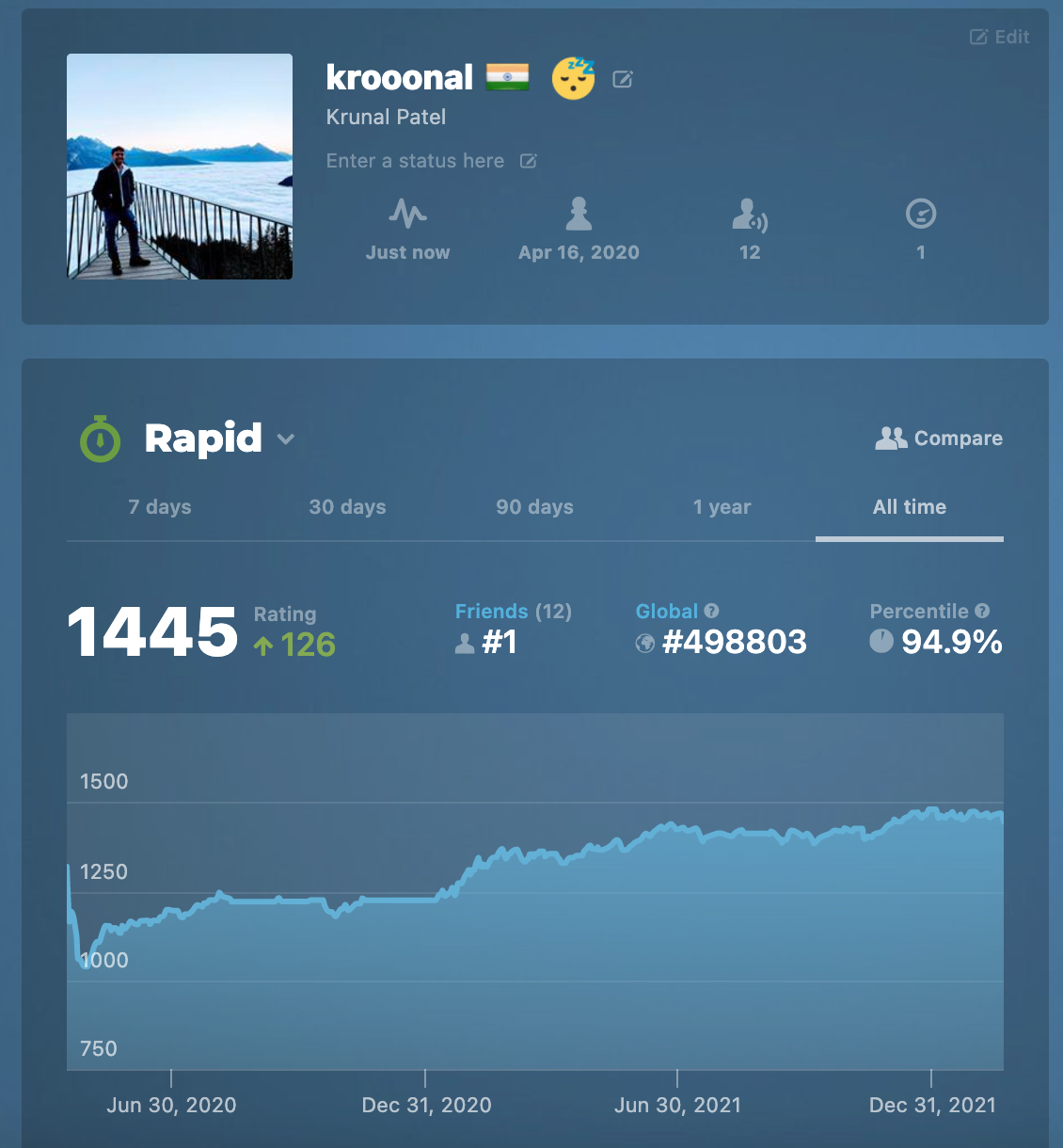Techniques to learn anything faster

After reading the book ‘The 4-hour workweek’ by Tim Ferris, I went to his website and found another book titled ‘The 4-Hour Chef’. From the title, it looks like a cooking related book. And in fact it is. But it is not just about ‘how to become a chef’. Tim uses ‘cooking’ as an example skill to teach how to learn anything fast and effectively. I haven’t even read the whole book. I just read the section he called ‘Meta’ in which he discusses the strategies to learn anything. Later on, I might read the rest of the book, but this section has some true gems worth sharing.
Personally, I like learning new things every now and then. But my absolute pain point has been learning French language. I have spent about a year and half in France earlier, and I am in Montreal now for over a year and half. Yet, I am not fluent in French. I have attempted to learn it many times and gave up many times. Largely, because I couldn’t feel the progress. And the reason for the lack of observable progress is that I have been taking the wrong approach to language learning. Kind of similar reasons why Tim picked ‘cooking’ as an example. I am, on the other hand, quite satisfied with my cooking skills. I am not a chef, but I manage to cook dishes that I like the most. After reading the book, it seems that I learned ‘cooking’ the correct way.
First, it is important to know that there is a correct way of learning. There are two types of experts for any field. First, who practised that skill for a very long time. Sometimes starting at a very young age. And the second, who gain expertise in that field in a record time. Though the second ones are not as good as the first ones, it turns out that they are much better at externalizing what they have learned. For example, if you want to learn ‘Hindi’ or ‘Gujarati’, you should not come to me. Even though I am very fluent in both of these languages, I won’t be able to teach them the right way. Try to find a coach, who either learned the skill quickly or have taught the skill to students in a very small amount of time.
Of course, it is very hard to reach the top 0.00001%, but it is relatively much easier to reach the top 5%. My rating on chess.com is around 1450, and I am already in top 5-6% according to stats there. Compare to that, being a grand master requires 2500 rating and at this time, Magnus Carlson (current world champion) has almost double of my rating. It is quite easy to reach 1500 rating in chess than getting any FIDE title. I have been just playing for fun and within a couple of years I reached there (almost). In fact, with focused learning, one can reach there in less than 6 months.

There are two principles we need to follow to learn anything. Failure points and margin of safety. The first principle is about figuring out why people give up learning that skill. I give up language learning because there are too many grammar rules, too hard to understand native speakers, not being able to recall the right words at the right time, etc. To learn a skill, we have to, at the least, address all the failure points. The second principle is about allowing some room for error. For cooking, it basically means picking the recipes that are hard to mess up. Recipes in which a few ingredients here and there wouldn’t change the taste so much. That reduces our chances of initial failures, and we stay motivated.
The learning formula Tim described is a simple acronym: DiSSS. Deconstruction, Selection, Sequencing, and Stakes.
The first and the most important step is Deconstruction. Deconstruction is about finding the minimal learnable units. The Lego blocks. There are 4 tools for this. First is reducing. Ever tried to learn Japanese? The script itself looks scary. But it can be learned quickly by just breaking down parts of characters into radicals. Master those ~200 radicals, and you can easily recognize the ~1900 Japanese characters.
The second tool is interviewing. Ask these questions to a coach: Who is good at this skill even though they have the obvious disadvantage? How did you learn this skill? What are the myths and mistakes you often see in students? What are your favourite material (books, videos, etc.) for learning this skill by self? If you had to train me for 4 weeks for a specific competition, what would the training look like?
The third tool is reversal. Often the controversial methods work well. Tim gives an example of building better fires, where following the opposite of the intuitive ‘tepee’ method works well. Basically, putting the largest logs at the bottom and paper and other fire starting squares on the top builds a better fire than the intuitive method.
And the fourth tool is translation. Turns out that there is an easy way to learn languages. Start with learning the auxiliary verbs like to have, to be, to do and to go. By memorizing just a few verbs in a few tenses, we can easily express very complex ideas in that language. To go further, Tim lists a few sentences in English that capture the essence of the grammar. Just learning the translation of those would help us deconstruct the elements of target language.

Selection is about figuring out which are the minimal blocks that we should focus on. For language learning, we should aim at mastering the most 1000-2000 frequent words used in conversations instead of learning all the words. For cooking, the simplest tip is to remove the ingredients or steps if you get overwhelmed. Remember the 80/20 principle? Only 20% of the inputs are responsible for the 80% of the outputs. Keep it simple in the beginning. I try to learn the recipes that require minimal ingredients, fewer steps and can be cooked in under 30 mins.
Sequencing is about learning the blocks in a specific order. For chess, it turns out that learning the endgames first gives better results than learning the openings. Obviously, each part is important. Opening knowledge helps you with getting a position where you have the advantage, and without endgame knowledge you won’t be able to checkmate the opponent even if you have a bunch of heavy pieces left on the board. The idea behind learning endgames first is that you will understand the capabilities of each piece better. Another example Tim gives is about learning Tango dance. It is more effective for males to learn the female role first.
Finally, creating stakes is about creating real consequences to keep the motivation. If there are no stakes, we would give up learning easily. For learning to cook, just host a dinner party at the end of the week. For me, to learn French, I can set up a goal to record and upload a video in which I would talk to a native speaker for a few minutes. The simplest way is to donate a large amount to a charity if you don’t achieve your desired goal. Quoting Tim from the book: “creating incentives and assigning accountability are the two most important keys to achieving a goal.” Here is a tool given in the book to help you with the accountability part. https://www.stickk.com.
Tim also describes a helper set of principles called CaFE formula. It stands for Compression, Frequency, and Encoding. It basically talks about creating cheat sheets, deciding the frequency of practice and memory techniques to remember stuff. I won’t describe them in detail here. They are just some helpful tools, on which plenty of material can be found on the internet.
To summarize, a structured approach to learning can truly reduce the learning time and prevent us from losing motivation. To learn a new skill, first deconstruct it into smaller pieces, then select which pieces you want to learn, create a sequence of learning them which is most effective and finally create stakes to stay motivated. Happy learning!
Hope you liked this. Check out my other posts below and don’t forget to subscribe!
